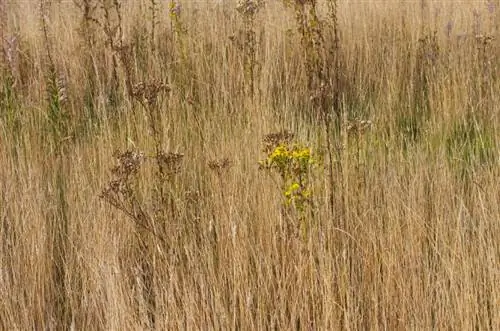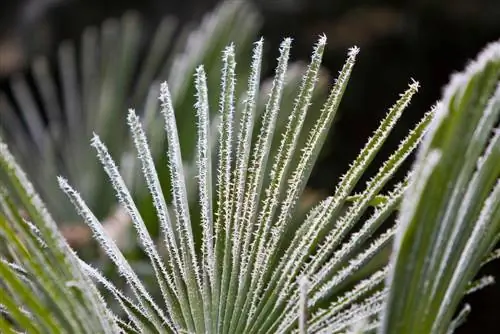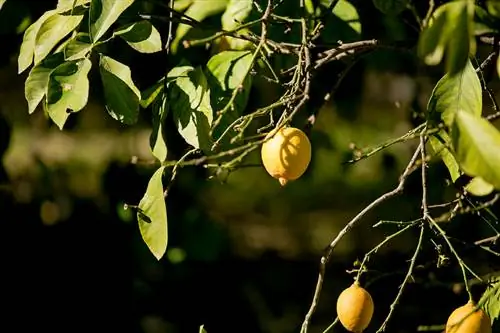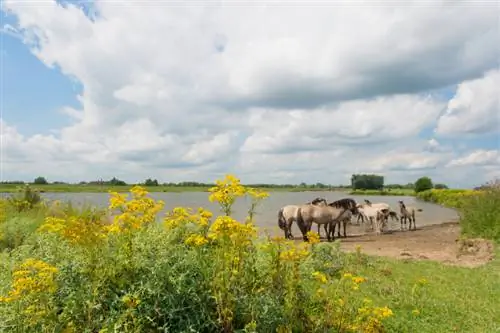- Author admin [email protected].
- Public 2023-12-16 16:46.
- Last modified 2025-01-23 11:20.
While the bitter substances contained in ragwort usually prevent animals from eating the plant, the unpleasant taste disappears when dried. Often the danger for horses, cattle and other ruminants does not lurk in the meadow, but is hidden in the hay, where it is difficult to identify.
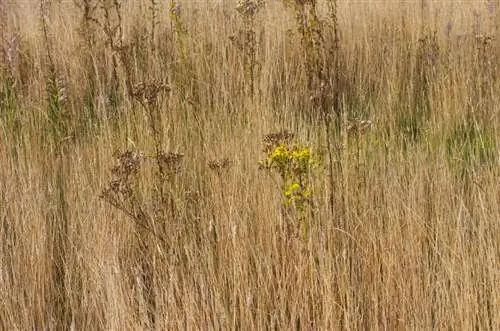
Why is dried ragwort dangerous?
Dried ragwort is hardly noticeable in hay, but retains its toxic effects and can cause digestive problems and irreversible liver damage in horses and cattle. Therefore, hay should be carefully checked for ragwort and only purchased from trustworthy suppliers.
Dried in the hay, hardly visible
Once the poisonous plant has been introduced along with the hay, it can hardly be identified in the feed. The drying process changes the color of the stem and the purple color that is often seen disappears. When dried, the heavily lobed leaves of ragwort can no longer be distinguished from dandelion leaves.
Extremely dangerous for animals
If the herb were cut down and remained in the hay, it would initially lead to digestive problems and subsequently to irreversible damage to the liver. What is fatal is that the poisoning is often not recognized in the early stages and the animals ultimately succumb to the gradual toxic effects.
Never feed horses and cattle hay that contains dried ragwort. If you have to buy hay, check the origin and quality carefully. Many sellers of roughage now vouch for the ragwort-free quality of the feed.
Simply mowing down and disposing of it is not enough
Once the dangerous ragwort has established itself, the pasture must be checked regularly. You can easily recognize St. James' ragwort by its tightly upright growth, up to one meter high, and the bright yellow basket flowers.
Since the plants do not lose their toxic effect even when dried, it is important to consistently remove all plants that have settled in a meadow. Mowing stimulates growth and the herbs grow faster and more lushly. Therefore, the only thing left is to cut out the plants including the roots and dispose of them.
Preventing the establishment of ragwort
- A closed grass area reduces the risk of spread
- Avoid turf damage caused by over-grassing, trampling and machines.
- Fertilize regularly to promote a dense turf.
- Choose seed mixtures with different types of grass.
Tip
If you suspect dried ragwort in the hay and an animal shows behavioral problems, you should have a blood analysis done at the vet immediately. In the early stages, the gradual poisoning can often be successfully treated. However, if the animal is already showing clear symptoms, any help often comes too late.

